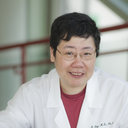Preliminary report: Late seizure recurrence years after epilepsy surgery may be associated with alterations in brain tissue transcriptome.
الكلمات الدالة
نبذة مختصرة
We recently proposed that the maturation of a new epileptic focus (epileptogenesis) may explain late seizure recurrences, starting months to years after resective epilepsy surgery. We explore here the hypothesis that inherent transcriptomic changes may distinguish such "late relapsers." An in-depth clinical review of 2 patients with recurrent seizures starting years after surgery is contrasted to 4 controls who remained seizure-free postoperatively. This clinical analysis is combined with RNA sequencing from the resected brain tissue, followed by unsupervised hierarchical clustering, independent pathway analysis, and multidimensional scaling analysis. Late-recurrence patients clustered apart from seizure-free patients, with late recurrence patients clustering together in the central space, whereas the seizure-free patients clustered together in the periphery. We utilized RNA-seq to identify differentially expressed genes between late-recurrence and seizure-free samples. We found 29 annotated genes with statistically significant differential expression (q < 0.05). The top canonical pathways identified as distinctly separating the late-recurrence patients from the seizure-free patients included the intrinsic prothrombin activation pathway (p = 1.55E-06), the complement system (p = 4.57E-05), and the atherosclerosis signaling pathway (p = 4.57E-05). Our observations suggest that late recurrences after epilepsy surgery may be influenced partly by differences in gene expression in neuroinflammatory and brain healing/remodeling pathways. Such a hypothesis needs to be validated in the future.


